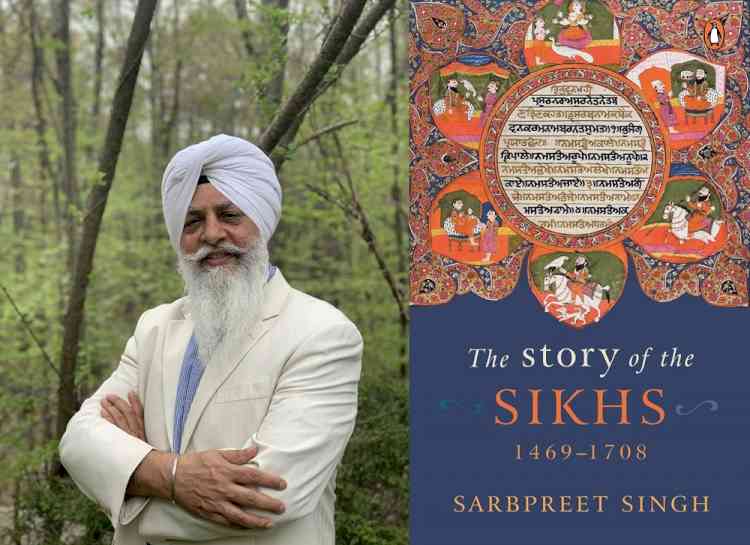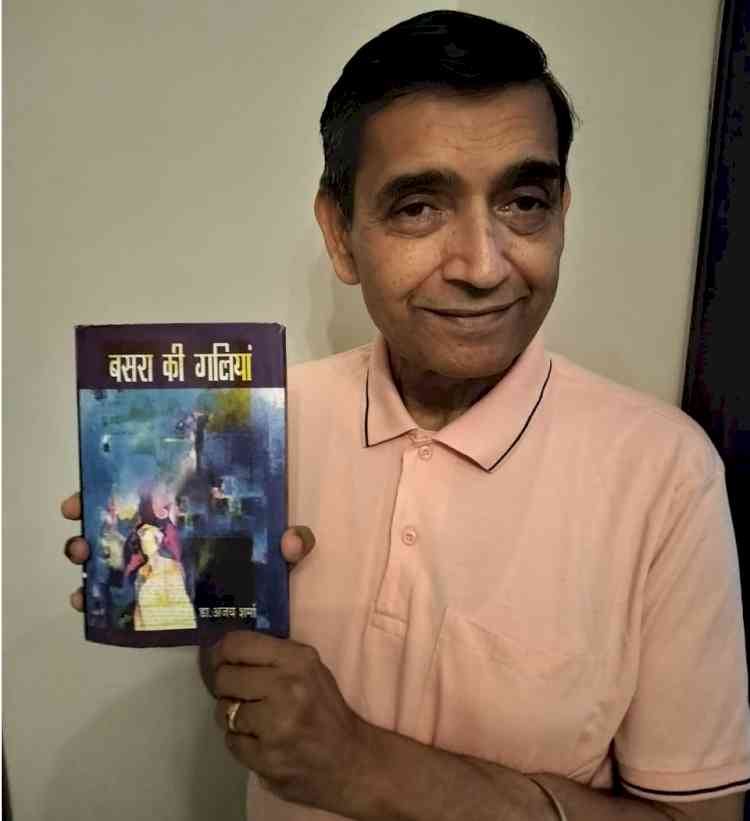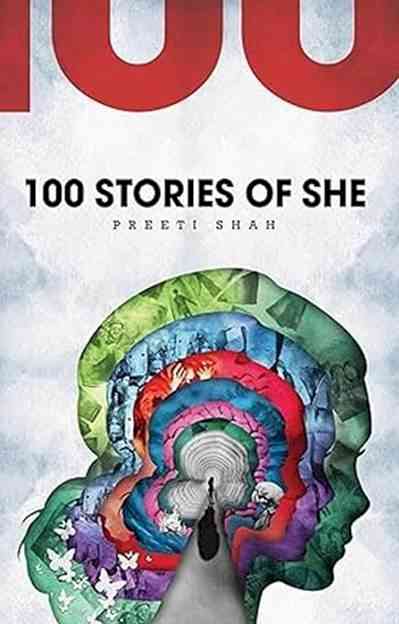'The lives of Sikh gurus, Granth Sahib represent a remarkable unity of thought' (IANS Interview)

By Vishnu Makhijani
New Delhi, Nov 26 (IANS) Growing up in Sikkim, he had never learned to read Gurumukhi as a young man. The coming of age happened when he was pursuing graduate studies in the US and a series of "fortuitous encounters" with Sikhs inspired him to learn about his faith. And proof that faith can move mountains is evident from his book "The Story of the Sikhs - 1469-1708", a comprehensive account of the ten Gurus that intricately weaves in accounts from the Guru Granth Sahib, the Dasam Granth and epic Braj poetry.
"The lives, teachings and writings of the Gurus and the divine wisdom enshrined in the Guru Grant Sahib together represent a unity of thought that is remarkable, but often misunderstood," writer, podcaster, commentator Sarbpreet Singh told IANS in an interview from his home in Massachusetts, adding the book "is a distillation of what I learned during my own journey as a young Sikh trying to understand and engage with his identity".
"I left India to pursue graduate studies in the US as a young man and through a fortuitous series of encounters with Sikhs who inspired me, I was motivated to learn about my faith. This budding interest in the history of Sikhism was accompanied by a deep immersion in Gurmat Sangeet or Sikh sacred music.
"Over the years, I started teaching both Sikh History and Gurmat Sangeet to young children in New Jersey and Boston and my interest deepened," he added.
"The Story of the Sikhs" (Penguin) first saw life as a podcast that he launched in an attempt to engage young Sikhs and inspire them to connect with their faith, "as I had as a young man. The success of the podcast, in particular the response of young people all over the world, motivated me to write the book", Sarbpreet Singh said.
Considerable research has gone into the book
"Having grown up in Sikkim, I never learned to read Gurmukhi as a young man; hence my first engagement with Sikh history was through authors who had written books in English," he added.
The very first work he read was J.D. Cunningham's "History of the Sikhs", which gave him an insight into the struggles of the Gurus as well as Sikhs in the 18th century as well as the sacrifices that went into the formation and preservation of Sikh identity. He went on to read Max Arthur Macuauliffe's opus, "The Sikh Religion", which was written from a very traditional perspective, followed by Sardar Khushwant Singh's two volume history.
"As the years passed, I taught myself Gurmukhi which gave me the opportunity to read multiple works by the Sikh writer, savant and mystic, Bhai Vir Singh which opened up a new world for me. Through Bhai Vir Singh's books such as 'Guru Nanak Chamatkar', 'Ashth Guru Chmatkar' and 'Sri Kalgidhar Chamatkar', I was introduced to the early Janamsakhi (biographical) accounts of Guru Nanak and the beautiful Braj poetry of Kavi Santokh Singh in his work 'The Sri Gur Pratap Suraj Granth," the author elaborated.
Using Bhai Kahn Singh Nabha's encyclopedia, "The Mahan Kosh", as well as Braj dictionaries published during the British Raj, he was then able to engage with a host of other writings such as 'The Gurbilas Patshahi Chevin', 'The Gurbilas Patshahi Dasvin' of Koer Singh and the 'Sri Gur Sobha' of Senapati, one of the celebrated court poets of Guru Gobind Singh.
"The Gurbilas literature with its soaring literature and tales of heroism gave me a deeper appreciation of the times that the Sikh faith lived through and its struggles with the later Mughal Emperors who had abandoned the liberal ways of Akbar The Great. For the sections of the book that deal with the life of Guru Gobind Singh, I delved into the Dasam Granth as well as into research by scholars such as Dr. Trilochan Singh and Dr. D.P. Ashtha," Sarbpreet Singh said.
He also engaged with the writings of Bhai Nand Lal, another of Guru Gobind Singh's beloved court poets, who composed beautiful ghazals in Farsi addressed to his master and diligently documented the code of conduct that had been created for the Sikh nation.
"Poetry from a variety of sources played an important part in the creation of this book, which is replete with excerpts in translation. Selections from The Guru Granth Sahib, The Dasam Granth, The writings of Bhai Gurdas, Guru Arjan's scribe, and Bhai Nand Lal, The Gur Pratap Suraj Granth, The Gurbilas texts and the haunting marsiye or elegiac poems (of mourning) of Allah Yar Khan Jogi have been included in the book in translation," the author pointed out.
How did he come to adopt the storytelling style rather than that of a historian for this book?
"Having taught history to reluctant teenagers for several years, I have always had an appreciation for how difficult it is for young people in particular, to engage with history. There are many wonderful books that have been written about the Sikh faith; many have been written by scholars and are intended to serve as text books or reference material.
"I wanted to create a work, which, while deeply researched was engaging and accessible. There is precedent for this type of writing; I have greatly enjoyed the historical writings of William Dalrymple and Manu Pillai; I find their work to be extremely engaging and truly a joy to read," Sarbpreet Singh explained.
Thus, his is a very "personal" book in that it focuses on those aspects of Sikh history that appealed to him and inspired him. "Hence, it was natural for me to approach it as a storyteller rather than as a student of history," he said.
What is the common thread running through the 10 Gurus, as also the Guru Granth Sahib, that makes the religion so appealing?
"The lives, teachings and writings of the Gurus and the divine wisdom enshrined in the Guru Grant Sahib together represent a unity of thought that is remarkable, but often misunderstood. The world has over time, dichotomized Guru Nanak and Guru Gobind Singh by focusing on the former's spirituality and the latter's valour.
"Within the Sikh tradition, this unity is clearly understood and is echoed in writings as diverse as the Var of Satta And Balwand, which appears in the Guru Granth Sahib and the Sri Gur Sobha of Senapati. This dichotomy, which has been reinforced by popular artistic representations of the Gurus, as well as what I would call 'lazy scholarship', does a great disservice to the faith" the author maintained.
Guru Gobind Singh, he asserts, was no less spiritual than Guru Nanak and the evidence is clear if one reads his compositions such as the Jaap Sahib. SImilarly Guru Nanak was every bit as militant as Guru Gobind Singh and as concerned about issues of justice.
"He was equally committed to the opposition of tyranny in all forms. The evidence lies in his collection of hymns known as Babarvani, enshrined in the Guru Granth Sahib, which is an excoriation of the tyranny of Babar as he subjected the inhabitants of Northern India to violence as he was establishing his rule," Sarbpreet Singh pointed out.
To that extent, while there are already endowed Chairs of Sikh Studies at several prominent US universities, he would "personally be inspired more by a Chair that focused on the Sikh traditions of Seva or Service and the Sikh commitment to fighting injustice and the Sikh embrace of inclusion as reflected in Guru Nanak's broad worldview. I would posit that the world needs this in a time when divisions seem to be deepening and cynical demagogues who benefit from them are ascendant in almost every nation".
What next? What's his next project?
"I am presently working on a few different things", and some of these projects are close to fruition:
A fictionalised retelling of the life of the Sufi Shah Hussain in the form of a novel that is a celebration of his magnificent poetry and his unconventional life
A collection of short fiction that traces the fortunes of the early Punjabi diaspora in North America
Volume 2 of the Story of the Sikhs, which covers the turbulent years of the 18th century when the Mughal Empire was collapsing and northern India was reeling from repeated invasions by Ahmad Shah Abdali, creating an opportunity for the Sikhs to seize political power."
This is Sarbpreet Singh's third book after "Night of the Restless Spirits" on the aftermath of the events of 1984, and "The Camel Merchant of Philadelphia" on the cosmopolitan court of the "Lion of Punjab", Maharaja Ranjit Singh. Thus, there is much to look forward to when Volume 2 of the present book appears.
(Vishnu Makhijani can be reached at [email protected])


 IANS
IANS 










